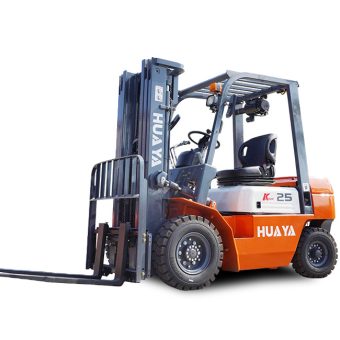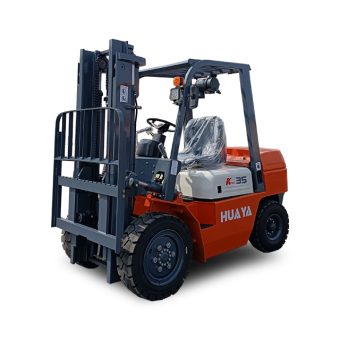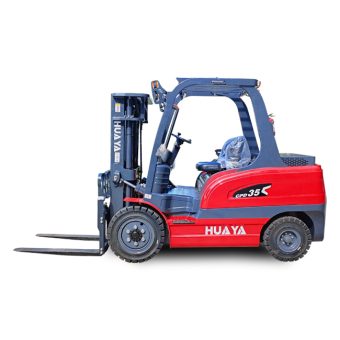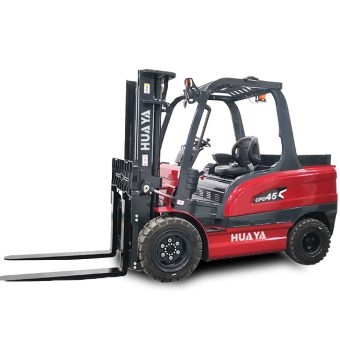
Noticias
Las carretillas elevadoras son la columna vertebral de almacenes, obras de construcción y plantas de fabricación. Mueven toneladas de material cada día, haciendo que las empresas funcionen como un reloj. Pero seamos sinceros: estas potentes máquinas también conllevan riesgos. Un movimiento en falso y tendrá mercancías dañadas, trabajadores heridos o algo peor. Así que la gran pregunta es: ¿cómo mejorar realmente la seguridad de las carretillas elevadoras?
Desglosémoslo de forma clara y práctica, porque la seguridad no es sólo una casilla de verificación, sino la base de un lugar de trabajo productivo.
La cuestión es la siguiente: ninguna señal de advertencia o equipo de seguridad puede sustituir a una formación sólida. Los operarios necesitan algo más que un rápido paseo: necesitan práctica, situaciones reales y una comprensión clara de cómo se comportan las carretillas elevadoras.
La formación debe abarcar el funcionamiento básico, la manipulación de la carga y la concienciación sobre los peligros.
Los cursos de reciclaje también son importantes: con el tiempo, la gente olvida o adquiere malos hábitos.
La certificación no es sólo papeleo; es la prueba de que alguien está cualificado para manejar estas máquinas.
Piénsalo así: si no dejarías que alguien condujera tu coche sin carné, ¿por qué dejar que condujera una carretilla elevadora sin formación?
Antes de que una carretilla elevadora se mueva ni un centímetro, revísela rápidamente. Es como revisar el coche antes de un largo viaje por carretera: no queremos sorpresas a mitad del trabajo.
Busca:
Estado y presión de los neumáticos
Capacidad de respuesta de los frenos y la dirección
Luces de advertencia, bocinas y alarmas
Sistemas hidráulicos y niveles de fluidos
Una inspección de cinco minutos puede evitar un costoso accidente. ¿Omitirla? Es como jugar a la ruleta con la seguridad en el trabajo.
Sobrecargar una carretilla elevadora es una receta para el desastre. La máquina tiene una capacidad de peso diseñada por una razón: si la sobrepasa, corre el riesgo de que la carga vuelque o se caiga.
Siempre:
Compruebe la placa de datos de la carretilla elevadora antes de levantarla.
Mantenga las cargas equilibradas y seguras.
Evite levantar objetos inestables o de formas extrañas sin accesorios diseñados para ellos.
En resumen: respete los límites de la carretilla elevadora. Es fuerte, pero no invencible.
Imagínese que intenta atravesar una habitación abarrotada con los ojos medio cerrados: eso es lo que tienen que hacer los carretilleros si los caminos no están despejados. Las obstrucciones, los derrames o la mala iluminación aumentan las posibilidades de accidente.
He aquí cómo solucionarlo:
Mantenga los pasillos lo suficientemente anchos para que puedan maniobrar las carretillas elevadoras.
Marque los pasos de peatones para que los trabajadores sepan por dónde es seguro caminar.
Asegúrese de que las zonas de almacenamiento estén organizadas y no rebosen de peligros.
Unas vías limpias y organizadas no sólo son eficaces, también salvan vidas.
La seguridad de las carretillas elevadoras no sólo concierne al operador, sino también a todos los que se encuentran cerca. Los chalecos reflectantes, las bocinas de advertencia y las luces intermitentes son importantes.
Los operadores deben llevar siempre puesto el cinturón de seguridad.
Los peatones deben utilizar ropa de alta visibilidad.
Las carretillas elevadoras deben estar equipadas con bocinas, alarmas y espejos para mejorar la visibilidad.
Piense en ellos como capas adicionales de protección, como los airbags y los cinturones de seguridad de su coche.
Las carretillas elevadoras no son coches de carreras. Acelerar en un almacén puede ahorrar unos segundos, pero aumenta enormemente las posibilidades de volcar o atropellar a alguien.
Establezca límites de velocidad en sus instalaciones y cúmplalos. Anime a los operarios a reducir la velocidad en esquinas, rampas y zonas con gran afluencia de peatones. Un ritmo controlado mantiene la seguridad de todos y el trabajo sigue realizándose.
Los operadores de carretillas elevadoras y los peatones deben estar en sintonía. Las señales manuales, el contacto visual y una comunicación clara pueden evitar malentendidos que provoquen accidentes.
Los conductores deben tocar la bocina al acercarse a ángulos muertos o intersecciones.
Los trabajadores deben evitar distraer a los operarios durante una elevación.
Las instalaciones pueden incluso utilizar radios bidireccionales para espacios más grandes.
Cuando todos saben lo que hacen los demás, los accidentes disminuyen drásticamente.
Ni siquiera el mejor operador puede controlar una carretilla elevadora que se cae a pedazos. Por eso es crucial un mantenimiento regular.
Programar revisiones rutinarias.
Sustituya inmediatamente las piezas desgastadas.
Lleve un libro de registro de todas las revisiones de mantenimiento.
Una carretilla elevadora bien mantenida es más segura, más fiable y dura más. Escatimar en el mantenimiento puede ahorrar dinero hoy, pero costará mucho más después de un accidente.
A fin de cuentas, mejorar la seguridad de las carretillas elevadoras no es sólo cuestión de normas, sino de mentalidad. Si los trabajadores se sienten presionados por las prisas, se saltan las inspecciones o ignoran los procedimientos, los accidentes son inevitables.
La dirección debe predicar con el ejemplo:
Recompense el comportamiento seguro, no sólo el trabajo rápido.
Simplifique la notificación de riesgos y evite culpar a otros.
Fomentar debates abiertos sobre mejoras de la seguridad.
Una cultura en la que la seguridad es lo primero no ralentiza la productividad, sino que la potencia.
Mejorar la seguridad de las carretillas elevadoras no es ciencia espacial. Se reduce a formación, concienciación y disciplina. Desde las inspecciones adecuadas hasta el respeto de los límites de carga, cada paso es importante. La verdad es que las carretillas elevadoras no son peligrosas por sí solas, lo que marca la diferencia es cómo se utilizan.
Así que la próxima vez que entre en un almacén o se suba a una carretilla elevadora, recuerde: la seguridad no le frena, le hace avanzar sin riesgos innecesarios.



